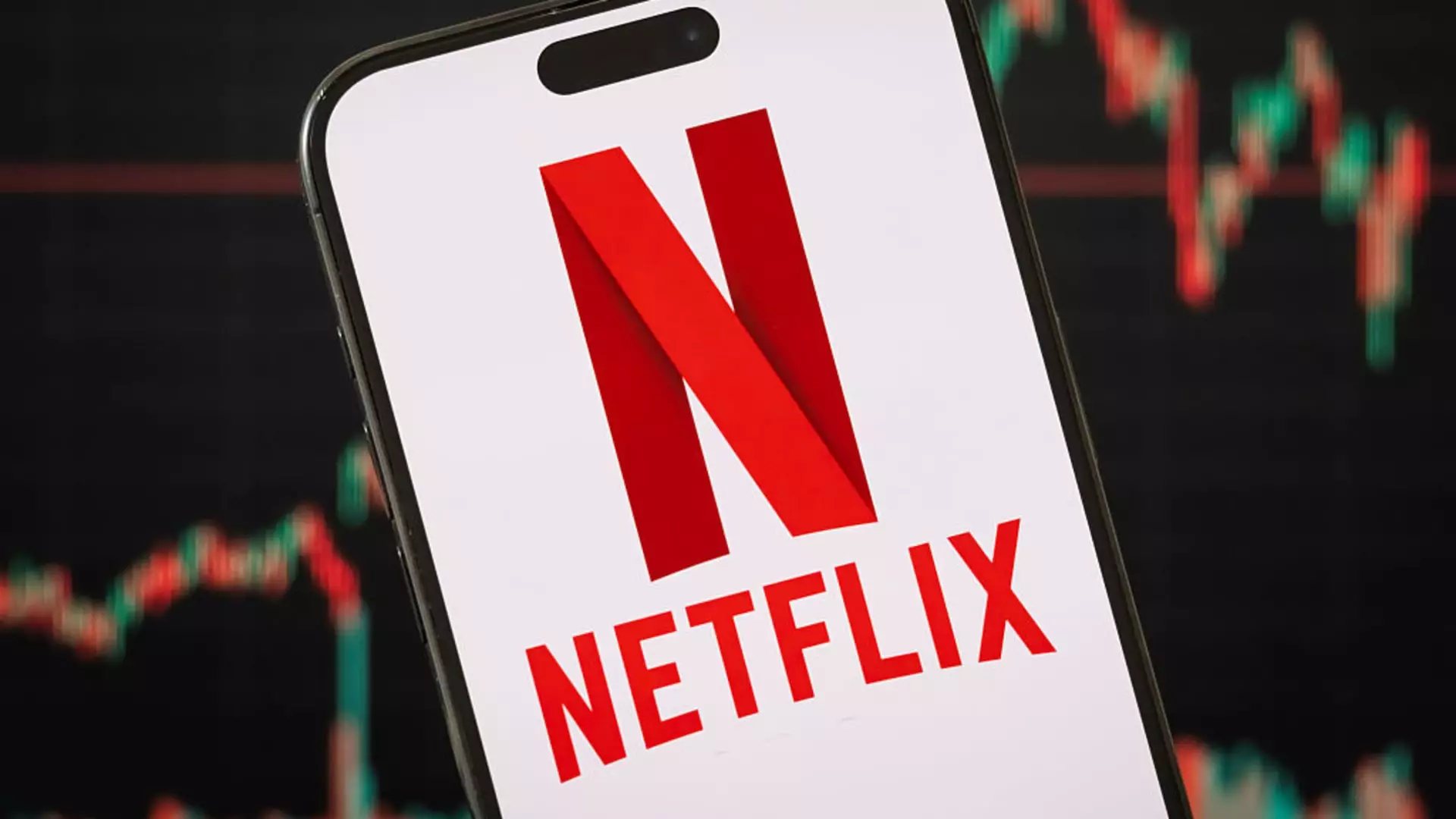In an era marked by volatility and uncertainty, Netflix has defied the odds, boasting an impressive eleven consecutive days of stock gains. This is not just a number; it signifies the company’s resilience in an unpredictable market where many players falter. It’s remarkable that this streak exceeds its previous record, which spanned nine days and felt like an eternity at the time. But what does this mean for investors, consumers, and the media landscape? The consistent upward trajectory in Netflix’s stock is as much about soaring subscriptions as it is about the robustness of their business model in the face of adversity.
The data from April 17 reveals that Netflix’s revenue surged by 13% in the first quarter of 2025, buoyed by stronger-than-expected numbers in both subscription and advertising revenue. In an environment where traditional media giants struggle, Netflix showcases a refreshing anomaly. With shares climbing over 30% since mid-January under the current administration, it forces a critical examination of what makes Netflix so resilient, especially when significant competitors like Disney and Warner Bros. Discovery are floundering.
Adapting in a Changing Landscape
Part of Netflix’s unparalleled performance can be attributed to its agility. While tariffs and trade wars have taken a toll on many sectors, Netflix has managed to navigate these turbulent waters with ease. The co-CEO Greg Peters commented on the state of their business, emphasizing that despite the broader economic turmoil, “there’s nothing really significant to note.” This nonchalant attitude raises questions about the robustness of not only their business model but also consumer behavior. In a time when discretionary spending is under threat, Netflix seems to be a safe harbor for investment.
The stock market reflects the world on a cosmic scale; thus, Netflix’s performance juxtaposed against a backdrop of failure elsewhere accentuates its unique position. While traditional media companies struggle to cope with retreating viewers and dwindling ad revenues, Netflix has emerged as the de facto leader in global streaming. This not only underscores its dominance but also hints at a paradigm shift in how audiences consume media.
Subscription Prices and Value Proposition
Another critical component of Netflix’s recent success is their pricing strategy. While the company has raised subscription prices across the board—$17.99 for standard, $7.99 for ad-supported, and an eye-watering $24.99 for its premium option—this appears to have been absorbed by the consumer base without a significant loss of subscribers. However, the trend of withholding detailed membership statistics prompts skepticism. Netflix’s emphasis on revenue growth instead of subscriber numbers evokes the question: Are they still growing their audience, or merely increasing prices to maintain their attractive revenue figures?
Even amidst this uncertainty, industry analysts remain optimistic. JPMorgan recently revised upwards their expectations for Netflix, suggesting that it not only has established itself as a leader in streaming but is also positioned to dominate the larger television landscape. Such proclamations, while indicative of the stock market’s euphoria, demand a tempered approach as they come layered with complexities intrinsic to the economy at large.
The Resilience of Entertainment in Tough Times
Yet, what stands out more than anything else about Netflix during these challenging economic times is the historical trend of entertainment resilience. Greg Peters pointed out that entertainment has historically been robust during recessions, a sentiment echoed by many analysts. But this begs the question: is the streaming model at risk of saturation as more players enter the market? While it currently appears Netflix can withstand economic headwinds, the sustainability of that growth trajectory remains a contentious debate.
The recent success story of Netflix sheds light on broader economic implications; amid fears of an impending recession, entertainment may be viewed not merely as a luxury but as an essential amenity. However, the critical aspect will be whether Netflix can sustain this growth amid rising competition and changing consumer habits, especially as economic conditions fluctuate unpredictably. This volatile market environment presents both challenges and opportunities, and Netflix’s ability to adapt may determine whether this streak of success is merely a high point or a sign of an enduring trend.

